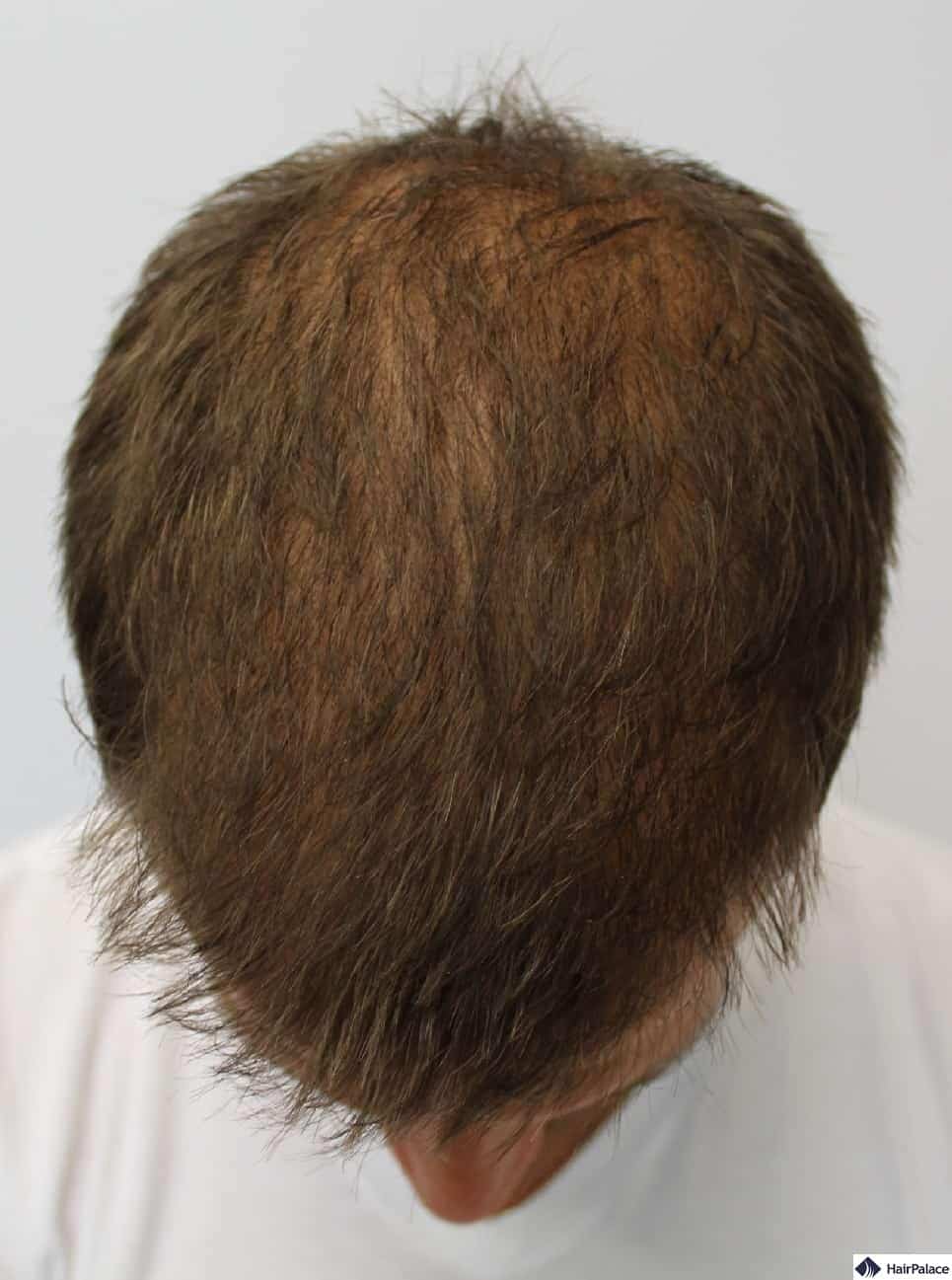Finding the Right Distribution for the Best Result – Sam’s Hair Transplant
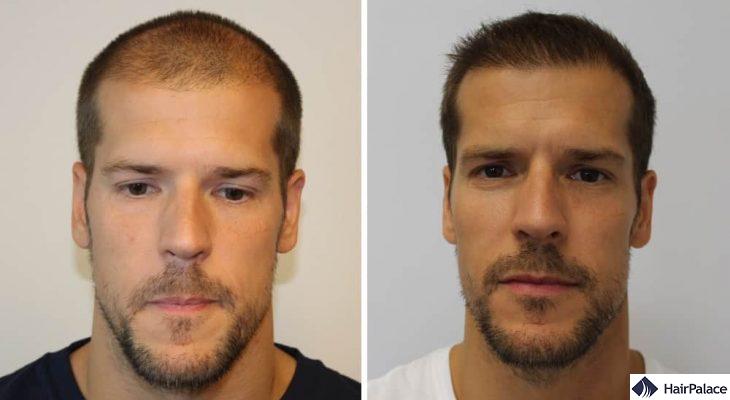
- The consultation
- How to proceed after the consultation?
- Finding the right distribution in Sams case
- The post-op period and Sams result
Sam had his FUE2 hair transplant at our clinic on the 29-30th of June 2018.
In this post, I will guide you through his case from the consultation to the final result.
In the meantime, you can learn more about how we distribute the hairs and how the procedure goes at HairPalace!
The consultation
Sam had his consultation at our clinic in Budapest on the 4th of July 2017.
He was interested in how many hairs he would need to increase the density and how much it would cost.
In Sam’s case mainly the frontal area had thinned out, and the hair loss had started at the crown area too:
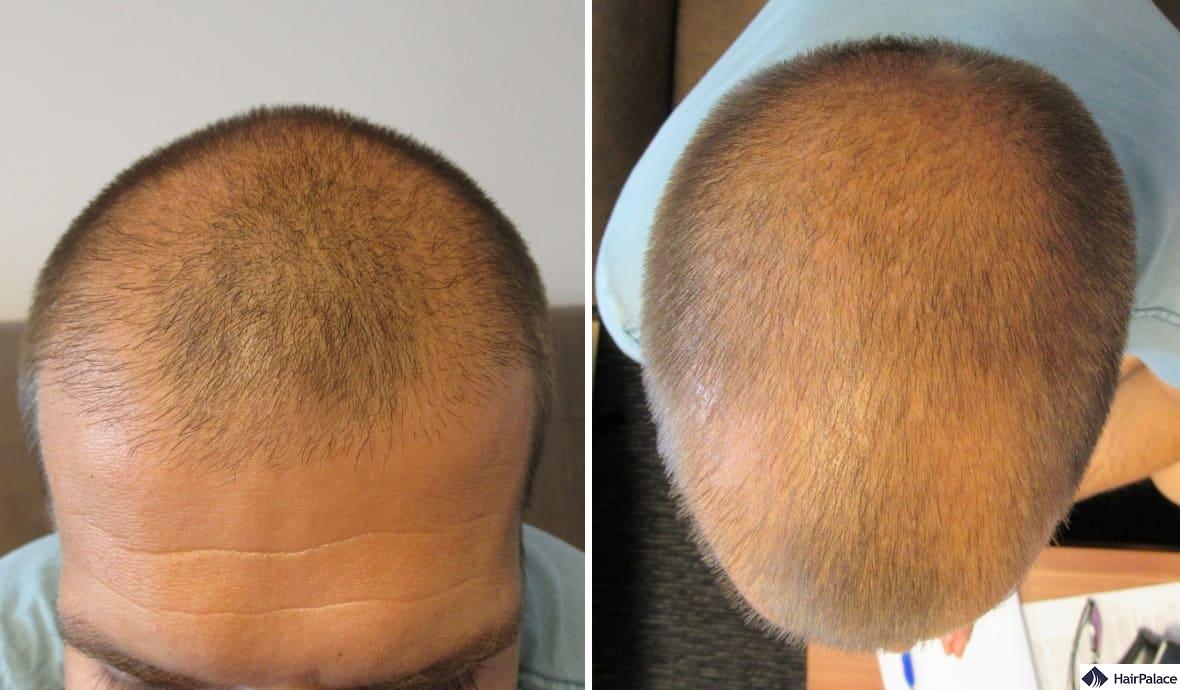
I estimated that around 5-6000 hairs would be needed to achieve a good density all over.
This always means a 2-day surgery, as in a day we can transplant about 3-4000 hairs maximally.
In the first half of the day, we extract the hairs, and after a short lunch break, we implant them.
In case of a 2-day procedure, on the 2nd day, we repeat this process to transplant the remaining amount.
Sam had an FUE treatment previously, so he was familiar with what the hair transplant surgery would involve.
Yet we had to talk about the post-surgical instructions too.
We provide a written guarantee on the success of the surgery and following the post-op instructions is one of the conditions.
This is because proper aftercare is just as vital to achieving a good result as the high quality of the procedure.
Besides, as each clinic has its own set of rules and regulations, we have to go through the details even if the patient had surgery previously.
After the consultation, Sam received his treatment plan and the quote.
In light of the details, he decided to proceed with his surgery later on. He got back to us in March 2018 to start making arrangements.
How to proceed after the consultation?
The hair transplant surgery can be carried out all year-round.
When choosing a suitable date, you must take into consideration how you can manage the post-op tasks best.
(After receiving the treatment plan, you have all the time you need to consider the details and decide when it will be ideal for you to have the surgery.)
We are usually fully booked 4-6 weeks in advance, so it is best to check the availabilities with us once you have a preferred date or week in mind.
After you’ve chosen and reserved your surgery date, we will ask you to send us your flight tickets as confirmation.
The quoted price includes accommodation for two people and the airport transfers too.
The flight details are needed so we can not only schedule your surgery but also arrange your stay accordingly.
Before the surgery, we will need to check your blood test results too.
You may organize them on your own, with your GP, locally, but it is also possible to have them done in Budapest.
Our blood test package includes all necessary tests, an extra night of stay and transfers between the apartment and the laboratory.
In the weeks before your treatment, we will provide you with all the details.
You will receive confirmation of the arrangements we made, the pre- and post-surgical instructions and all the documents you will be handed on the day of the treatment too.
Naturally, we will also be at your disposal should you have any questions along the way!
Finding the Right Distribution in Sam’s case
In hair transplantation, with the right technique in the right hands – combined with the proper aftercare – exceptional results and growth rate can be accomplished.
But there is one more vital factor for achieving a prominent, stunning change: finding the right distribution.
To do so, these are a few key points we must consider:
- the size and density of the recipient area,
- the number of hairs available for the hair transplant,
- the unique qualities of the hair (such as texture, thickness)
- any specific wishes and request of the patient.
The final distribution is always thoroughly discussed with and ultimately determined by the patient before we start the implantation.
In Sam’s case, the goal was to achieve even density all over the top.
His hair thinned out primarily at the front, in an upside-down U-shape, but he still had a good density in the middle:
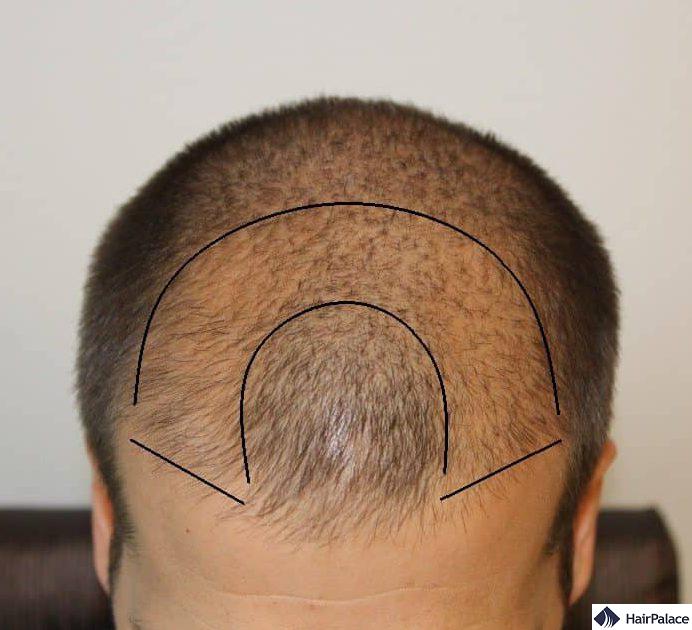
Under the magnifying glass, I saw that there was not enough space in between the hairs in the mid-frontal area.
By implanting hairs too close, I could have hurt the native hairs.
They would fall out, and the implanted hairs would grow. So overall, there would be no difference made.
As a result, I decided against implanting hairs in the middle and focused on evening out the density in the surrounding area instead.
In total, I transplanted 5056 hairs in Sam’s 2-day surgery.
I have strengthened the hairline, filled up the triangles and increased the density in between Zones 1 and 2.
I needed to implant 3800 hairs to achieve a uniform density in these areas.
Then, I implanted the remaining 1256 hairs to the crown:
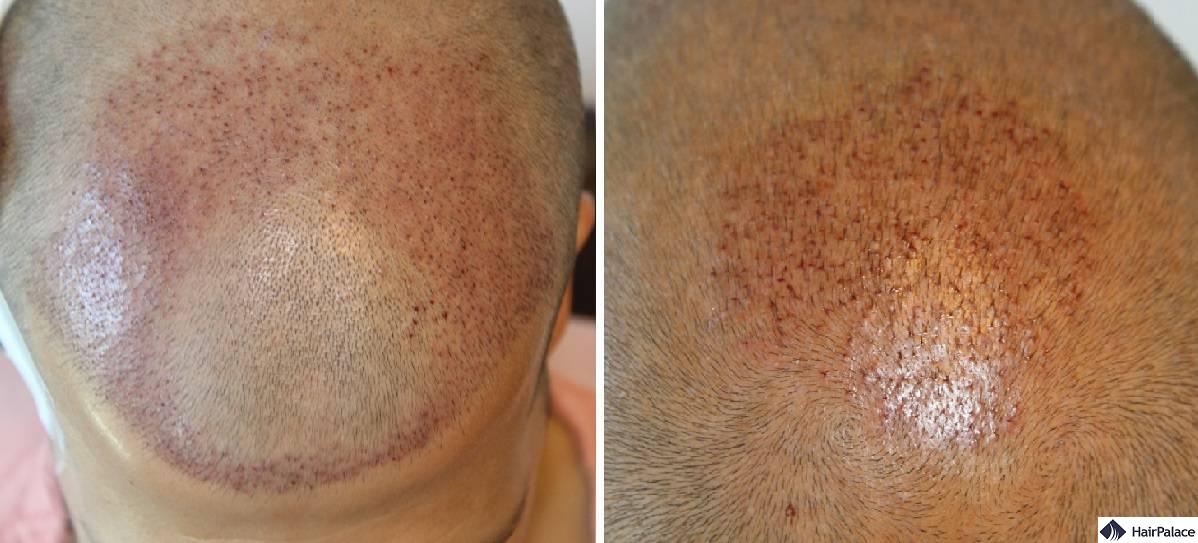
The Post-op Period and Sam’s Result
The hair transplantation does not bring instant results.
The tiny wounds close up in just a few days, however, the complete regeneration of the scalp and the growth of the new hairs take months.
During the first weeks, the implanted area will be vulnerable. The scalp must be protected from direct sunlight, hot and cold temperatures.
Sweating and high blood pressure may negatively affect the healing process, so exercising should be avoided too.
The implanted hairs need time to anchor in – and until this process is finished, they can be easily pulled out.
Thus it is best to prepare button-ups for the first few days.
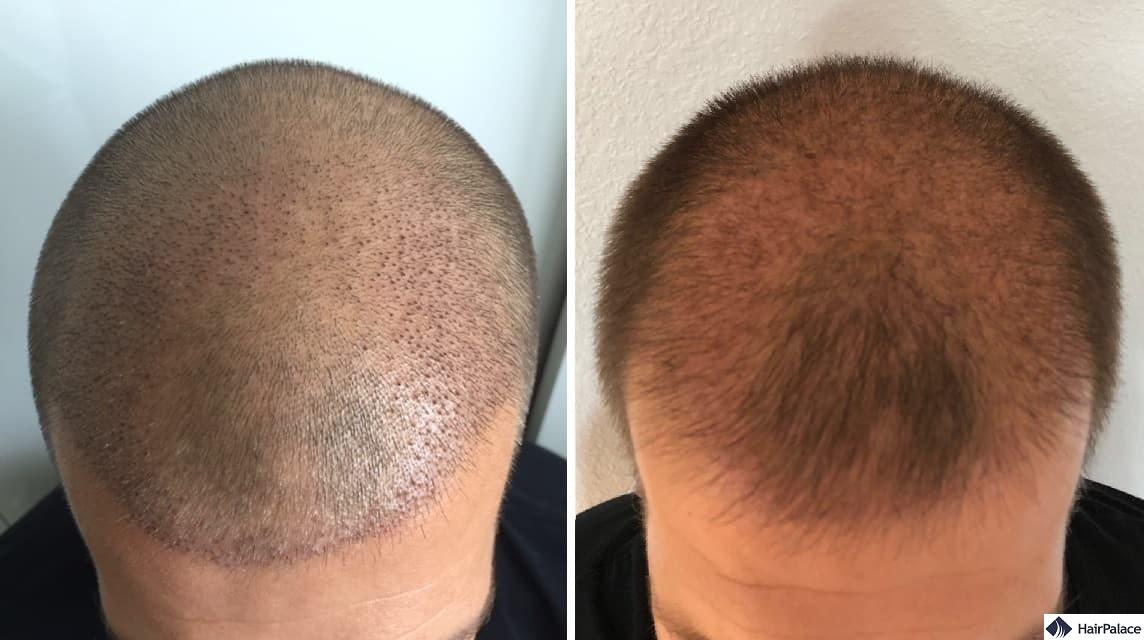
After the 3rd post-op week, the implanted area does not need extra special attention.
Naturally, patients have to avoid getting sunburnt, but as the head can be covered again, it won’t cause any difficulty.
In this period, the transplanted hairs fall out, and the roots enter a dormant phase.
As a result, the recipient area slowly returns to its original state.
From the 4th post-op month, the new hairs start to grow out gradually, and the density starts to increase.
By the 6th month’s check-up, roughly 50% of the implanted hairs are out.
Usually, this amount is enough for a visible change, but the density has yet to fill up.
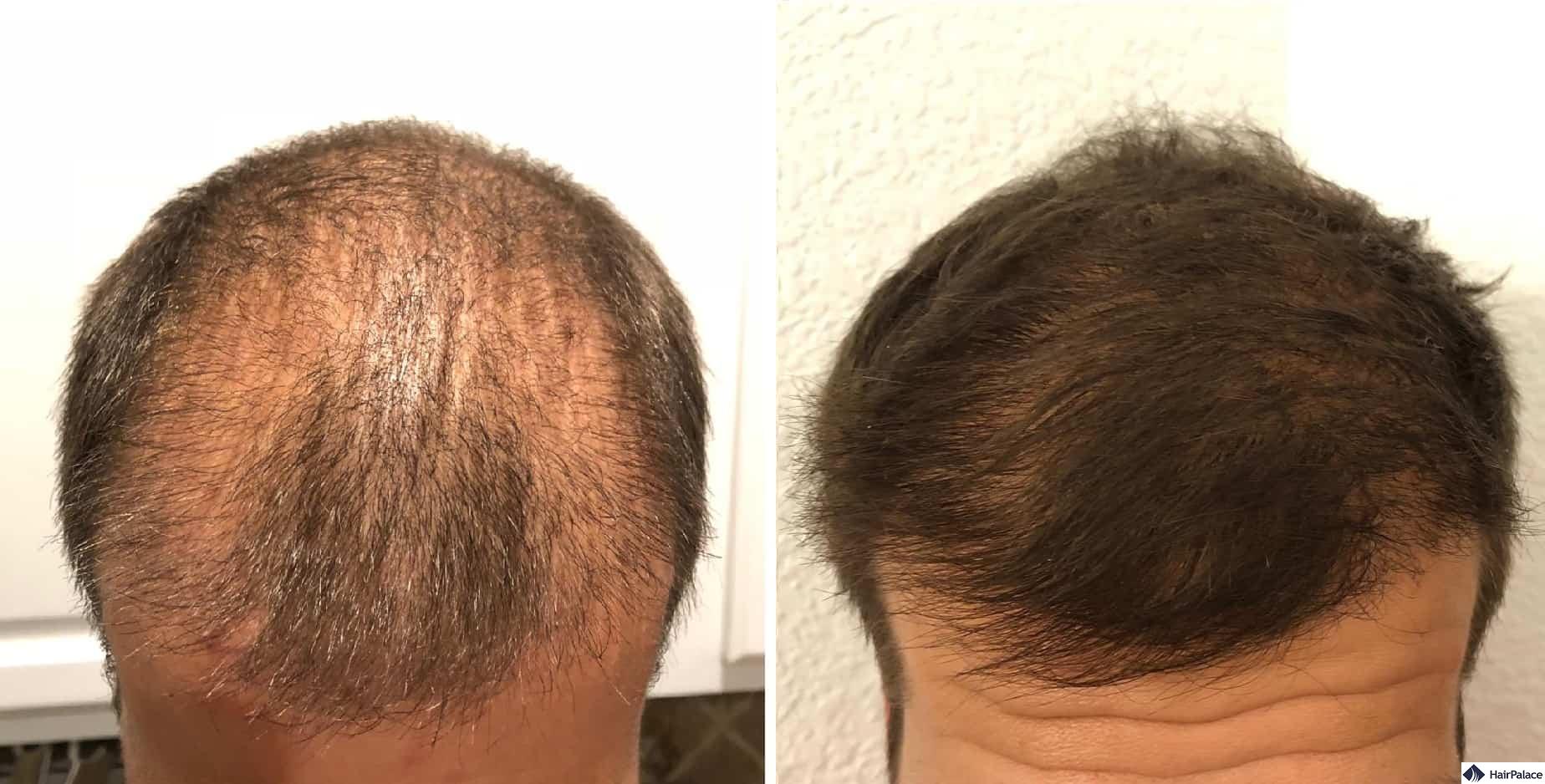
After the surgery, it takes 12-15 months for the final result to show up.
The progress is affected by various factors, e.g. the age and the condition of the scalp. Thus the timeline is slightly different for each patient.
Sam reached the full result by the final check-up.
The transplanted hairs grew out very well, providing a natural, even density:
